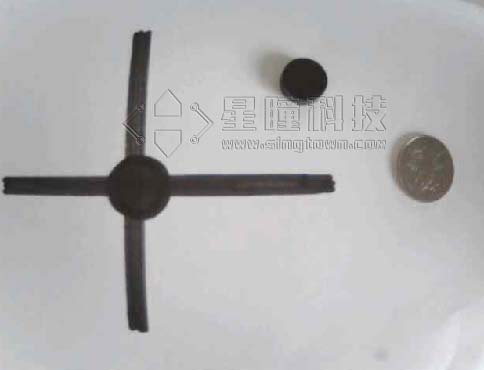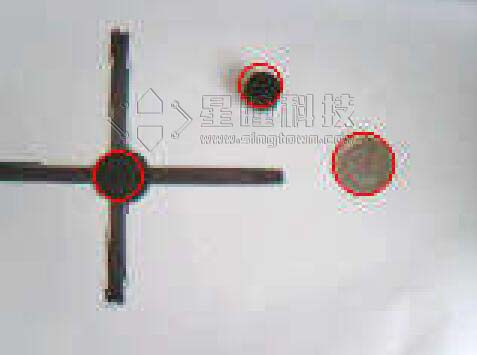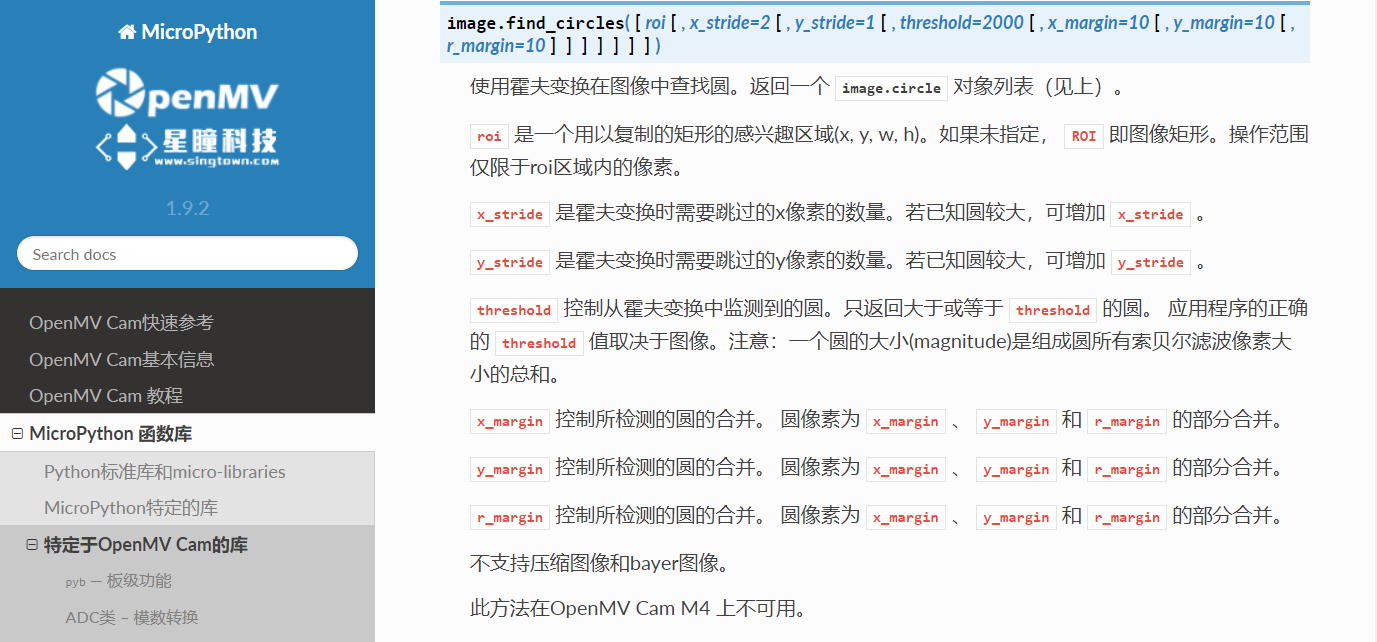Routine explanation -09-find_circles to identify circles
Video tutorial 13 - Shape recognition: https://singtown.com/learn/50009/
Video Tutorial 21 - A car chasing other objects: https://singtown.com/learn/50041/
This routine is 09-find_circles.py\ The purpose of this routine is to use the Hough transform for circle recognition.\ This example shows how to find a circle using the Hough transform. https://en.wikipedia.org/wiki/Circle_Hough_Transform
Note: The find_circles() method only looks for circles that are completely inside the image. Circles that exceed the image or ROI are ignored.
Only OpenMV3 M7 2.5.0 or later firmware can run this program oh (OpenMV2 M4 performance is not enough to run).
# 圆形检测例程
#
# 这个例子展示了如何用Hough变换在图像中找到圆。
# https://en.wikipedia.org/wiki/Circle_Hough_Transform
#
# 请注意,find_circles()方法将只能找到完全在图像内部的圆。圈子之外的
# 图像/ roi被忽略...
import sensor, image, time
sensor.reset()
sensor.set_pixformat(sensor.RGB565) # 灰度更快
sensor.set_framesize(sensor.QQVGA)
sensor.skip_frames(time = 2000)
clock = time.clock()
while(True):
clock.tick()
#lens_corr(1.8)畸变矫正
img = sensor.snapshot().lens_corr(1.8)
# Circle对象有四个值: x, y, r (半径), 和 magnitude。
# magnitude是检测圆的强度。越高越好
# roi 是一个用以复制的矩形的感兴趣区域(x, y, w, h)。如果未指定,
# ROI 即图像矩形。操作范围仅限于roi区域内的像素。
# x_stride 是霍夫变换时需要跳过的x像素的数量。若已知圆较大,可增加
# x_stride 。
# y_stride 是霍夫变换时需要跳过的y像素的数量。若已知直线较大,可增加
# y_stride 。
# threshold 控制从霍夫变换中监测到的圆。只返回大于或等于阈值的圆。
# 应用程序的阈值正确值取决于图像。注意:一条圆的大小是组成圆所有
# 索贝尔滤波像素大小的总和。
# x_margin 控制所检测的圆的合并。 圆像素为 x_margin 、 y_margin 和
# r_margin的部分合并。
# y_margin 控制所检测的圆的合并。 圆像素为 x_margin 、 y_margin 和
# r_margin 的部分合并。
# r_margin 控制所检测的圆的合并。 圆像素为 x_margin 、 y_margin 和
# r_margin 的部分合并。
# r_min,r_max和r_step控制测试圆的半径。
# 缩小测试圆半径的数量可以大大提升性能。
# threshold = 3500比较合适。如果视野中检测到的圆过多,请增大阈值;
# 相反,如果视野中检测到的圆过少,请减少阈值。
for c in img.find_circles(threshold = 3500, x_margin = 10, y_margin = 10, r_margin = 10,r_min = 2, r_max = 100, r_step = 2):
img.draw_circle(c.x(), c.y(), c.r(), color = (255, 0, 0))
print(c)
print("FPS %f" % clock.fps())
original image:\

The effect of running the program is as follows:

Singtown Technology OpenMV official Chinese document function explanation:
